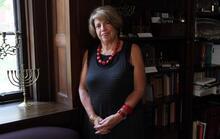The West Responds
The movement for Soviet Jewry took place during the Cold War—a decades-long standoff between the United States and the Soviet Union. During those years, each side searched for real and imagined traitors. In the Soviet Union, leaders like Joseph Stalin increasingly viewed all Jews as “agents of American intelligence.” After Stalin’s death in 1953, many of his policies were discredited, but hostility toward Jews continued. Few in the West were aware of their plight until the 1960s, when Soviet officials eased restrictions on travel and trade.
As people in the West became increasingly aware that Soviet Jews were being denied basic human rights including religious freedom and the right to escape discrimination through emigration, some were moved to take action. They set out to challenge the Soviet Union’s treatment of Jews and other minorities by demanding that US and UN officials pressure the Soviets to end all restrictions on emigration. They also tried to ease the lives of refuseniks. Many were jailed on trumped-up charges; others were denied medical care; and still others lost their jobs and quickly discovered that the only work available to them paid barely enough to survive.
It Was Hard not to React

Judy Patkin
A Personal Connection to this Work

Judy Wolf
We Had No Other Choice

Fran Putnoi
Missions to the Soviet Union

Cantor Roy Einhorn
The Growth of a Movement



